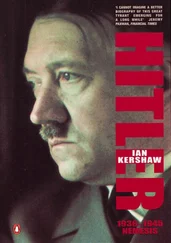119. DZW , 6, p. 767; DRZW , 10/1 (Lakowski), p. 673; Schwendemann, p. 31; Sebastian Siebel-Achenbach, Lower Silesia from Nazi Germany to Communist Poland, 1942–49 , London, 1994, pp. 77–8.
120. BA/MA, NL Schörner, N60/74, ‘Mein Verhalten bei der Kapitulation im Mai 1945’ and ‘Zur Vorgeschichte der Kapitulation’, both 10.3.58.
121. Steinkamp, p. 238. Kaltenegger, Schörner , pp. 306–7, 315, supports Schörner’s own account. See also Roland Kaltenegger, Operation ‘Alpenfestung’: Das letzte Geheimnis des ‘Dritten Reiches’ , Munich, 2005, pp. 336–46.
122. One ordinary soldier in Schörner’s army noted in his diary how he and a few comrades were ordered out of the lorry in which they were leaving, desperately trying to reach the Americans after the dissolution of his unit had been determined. The staff officers of his company then climbed in and drove off. ‘We are the cheated ones,’ the soldier concluded.—Granzow, p. 179 (9.5.45).
123. Schwendemann, p. 27.
124. DRZW , 10/1 (Lakowski), p. 677. According to a report for the navy leadership, ships shuttling backwards and forwards across the Baltic ferried out between 11 and 17 May 109,205 soldiers, 6,887 wounded and 5,379 civilian refugees.—BA/MA, RM7/854, fo. 333, Lage Ostsee, 18.5.45.
125. Müller and Ueberschär, pp. 107–8.
126. DRZW , 10/2 (Overmans), pp. 502–3.
127. See Schwendemann, p. 27.
128. Neitzel, Abgehört , p. 49.
129. KTB/OKW , vol. 4/2, pp. 1281–2 (9.5.45); repr. in Müller and Ueberschär, p. 181; Die Wehrmachtberichte 1939–1945 , vol. 3: 1. Januar 1944 bis 9. Mai 1945 , Munich, 1989, p. 569 (9.5.45).
130. Dönitz, p. 471.
131. Die Niederlage 1945 , pp. 440, 445 (12.5.45, 15.5.45). Dönitz was still insisting on 18 May that there should be no concession to Allied demands to remove ‘emblems of sovereignty’ from German military uniforms.— 1945: Das Jahr der endgültigen Niederlage der faschistischen Wehrmacht , pp. 411–13.
132. Die Niederlage 1945 , p. 439 (11.5.45).
133. Speer, pp. 499–500, for a description of the continued Dönitz administration; Die Niederlage 1945 , pp. 433–49, for the entries in Dönitz’s diary on the workings of his administration between 8.5.45 and 17.5.45.
134. Die Niederlage 1945 , p. 446 (16.5.45). For the continuity in Dönitz’s political ideas, see Steinert, pp. 283–6, and also Lüdde-Neurath, p. 81.
135. BAB, R3/1624, fos. 10–13, Speer to Krosigk, 15.5.45; Dönitz, p. 471; and see Matthias Schmidt, Albert Speer: Das Ende eines Mythos , Berne and Munich, 1982, pp. 167–71.
136. Speer, p. 500.
137. IWM, EDS, F.3., M.I. 14/950, memorandum of Stuckart, 22.5.45; Die Niederlage 1945 , pp. 433–5, 441–2 (8.5.45, 12.5.45) for discussions of Dönitz’s resignation. See also Dönitz, p. 472.
138. Description from David Stafford, Endgame 1945: Victory, Retribution, Liberation , London, 2007, pp. 407–8. See also Dönitz, pp. 473–4. For divisions of opinion within the Allied leadership on how to deal with the Dönitz administration, and the steps leading to the arrest of its members, see Marlis Steinert, ‘The Allied Decision to Arrest the Dönitz Government’, Historical Journal , 31 (1988), pp. 651–63.
139. United States Strategic Bombing Survey , New York and London, 1976, vol. 4, p. 7. The figure given there for those killed, 305,000 people, has been shown to be too low. See Jörg Friedrich, Der Brand: Deutschland im Bombenkrieg 1940–1945 , pb. edn., Berlin, 2004, p. 63, who puts the figure at between 420,000 and 570,000, and DRZW , 10/1 (Boog), p. 868, which estimates the civilian dead—not the total number—at 380,000–400,000. Rüdiger Overmans reckons the losses at between 400,000 and 500,000.—‘Die Toten des Zweiten Weltkriegs in Deutschland’, in Wolfgang Michalka (ed.), Der Zweite Weltkrieg: Analysen, Grundzüge, Forschungsbilanz , Munich and Zurich, 1989, p. 860. See also Rüdiger Overmans, ‘55 Millionen Opfer des Zweiten Weltkrieges? Zum Stand der Forschung nach mehr als 40 Jahren’, Militärgeschichtliche Mitteilungen , 48 (1990), pp. 107, 109. Yet a further estimate puts the most likely figure at 406,000, though an upper limit has ranged as high as 635,000. Most were killed in the last phase of the war.—Dietmar Süß, ‘Die Endphase des Luftkriegs’, in Kriegsende in Deutschland , Hamburg, 2005, p. 55. More than half the civilian deaths from bombing occurred in the last eight months of the war.—Nicholas Stargardt, Witnesses of War: Children’s Lives under the Nazis , London, 2005, pp. 264 and 430 n. 4.
140. Bessel, p. 69. Establishing reliable figures for the number of deaths of refugees fleeing in the last months of the war is extraordinarily difficult. The far higher figures frequently given often extend the categories of refugee and the time and geographical areas covered to include, for instance, the ‘resettlement’ of Balts of German extraction following the Nazi–Soviet Pact, Soviet Germans deported by Stalin, and Germans expelled from the east after the war. The closest estimate to deaths arising from refugee flight appears to be 473,000.—Overmans, ‘Die Toten des Zweiten Weltkriegs in Deutschland’, p. 868; Overmans, ‘55 Millionen Opfer des Zweiten Weltkrieges?’, p. 110.
141. Rüdiger Overmans, Deutsche militärische Verluste im Zweiten Weltkrieg , Munich, 1999, pp. 238–9, 316, 318, 321. According to Overmans’ calculations (p. 265), of the total German military deaths (5,318,000) the eastern front accounted for 51.6 per cent (2,743,000), fighting in the final phase (Jan.–May 1945) 23.1 per cent (1,230,000) and the western theatre 6.4 per cent (340,000).
142. Allied worries about an insurrection never materialized, though Werwolf was still taken seriously in the weeks after the capitulation.—Bessel, pp. 175–6; Perry Biddiscombe, Werwolf! The History of the National Socialist Guerrilla Movement 1944–1946 , Toronto and Buffalo, NY, 1998, pp. 279–82.
143. See Bessel, ch. 7, ‘The Beginning of Occupation’, for a good summary of the early stages.
144. Die Niederlage 1945 , pp. 439, 447 (11.5.45, 16.5.45).
145. Bessel, p. 167.
146. Anonyma , p. 183 (11.5.45).
147. StAM, LRA 31391, unfoliated, report of Evang. luth. Pfarramt Berchtesgaden, 25.6.46; report of the Catholic parish of St Andreas, 24.6.46.
148. BA/MA, N648/1, NL Dethleffsen, Erinnerungen, fo. 1.
149. NAL, WO208/5622, C.S.D.I.C. (U.K.) report, 13.5.45, comments of Vice-Admiral Frisius.
150. A. J. and R. L. Merritt (eds.), Public Opinion in Occupied Germany: The OMGUS Surveys, 1945–1949 , Urbana, Ill., 1970, pp. 32–3. Experiences of occupation and the inevitable hardships of daily life in ruined cities—shortages of food and housing, a valueless currency, and a standard of living frequently lower than it had been before 1944–5—together with a sense of national humiliation and the creation of denazification trials often seen to be aimed at the ‘little man’ who, it was felt, had been forced to comply with the demands of the regime, were among the factors that played their part in enhancing a rosy view of the ‘good years’ of National Socialism, before the disasters of the last phase of the war.
151. See also Peter Fritsche, Life and Death in the Third Reich , Cambridge, Mass., and London, 2008, pp. 301–2.
152. ‘Tief vergraben, nicht dran rühren’, p. 218.
153. Cited in Otto Dov Kulka, ‘The German Population and the Jews: State of Research and New Perspectives’, in David Bankier (ed.), Probing the Depths of German Antisemitism: German Society and the Persecution of the Jews, 1933–1941 , New York, Oxford and Jerusalem, 2000, p. 279.
Читать дальше












